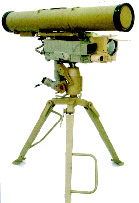Overview
On November 12, 2018, Hamas launched an anti-tank Kornet missile from the Gaza Strip at a bus carrying soldiers near the border with the Gaza Strip (south of the city of Sderot). An IDF soldier was severely wounded. A few minutes before the missile was launched, dozens of soldiers got off the bus to receive a briefing nearby. Launching the missile was the “opening shot” of a massive rocket attack initiated by Hamas, targeting cities and communities in the western Negev, with other terrorist organizations joining as well.
- Kornet is a Russian-made laser-guided advanced anti-tank weapon system. Iran supplied it to Hezbollah, which skillfully employed Kornet missiles against IDF soldiers during the Second Lebanon War (2006). After the war (around 2009), Iran and probably also Hezbollah supplied this weapon to the terrorist organizations in the Gaza Strip, in an attempt to repeat their success in Lebanon (Hezbollah leader Hassan Nasrallah publicly admitted that he had supplied Kornet missiles to the Gaza Strip). The provision of Kornet missiles to the Hamas (and other terrorist organizations) was carried out to equip them with a response to the advantage of the IDF armored vehicles, demonstrated in operations carried out in the Gaza Strip.
- Hamas and the other terrorist organizations used Kornet missiles against IDF armored vehicles in Operation Protective Edge and Operation Pillar of Defense. In addition, anti-tank missiles were fired at military and civilian vehicles moving near the border between Israel and the Gaza Strip:
- On April 7, 2011, Hamas launched a Kornet missile at a school bus near Sa’ad junction (south of Sderot). A few minutes before the launch, dozens of students got off the bus. The driver and a 16-year old boy remained on the bus. The boy was killed and the driver was slightly wounded. The launch triggered escalation in the south of Israel. During the escalation, about 120 rockets and mortar shells were fired at Israel, hitting the cities of Beersheba, Ashdod and Ashkelon and other communities. The IDF responded by an extensive attack on terrorist targets.
- On November 10, 2012, the Popular Front for the Liberation of Palestine (PFLP) launched a Kornet missile at an IDF jeep engaged in routine security activity. Four IDF soldiers were wounded, one of them severely. The attack triggered escalation which lasted for several days. The escalation led to the killing of Ahmad al-Jaabari, acting commander of Hamas’s military wing, and to Operation Pillar of Defense (starting on November 14, 2012).
Kornet missile launched at bus near the Gaza Strip border fence
- On November 12, 2018, in the afternoon, Hamas fired a Kornet missile from the Gaza Strip at a bus near the border fence, south of Sderot. The bus went up in flames and a soldier guarding it was severely wounded. The launch was carried out a few minutes after dozens of soldiers got off the bus to receive a briefing nearby. The missile launch was the “opening shot” of a Hamas-led massive rocket attack targeting the western Negev and lasting for 24 hours.
- After firing the missile, Hamas and the joint operations room of the Gaza Strip terrorist organizations released an announcement claiming responsibility. According to the claim of responsibility, the launch was carried out in retaliation for a confrontation east of Khan Younes, in which seven terrorist operatives were killed. According to the announcement, the bus went up in flames and all the passengers were killed or wounded (website of Hamas’s military wing, November 12, 2018).
The Kornet missile smuggled into the Gaza Strip by Iran
- The Kornet missile (AT-14 Spriggan) is an advanced anti-tank laser-guided weapon system manufactured by Russia. It is designated to hit armored vehicles. The missile is equipped with a warhead capable of penetrating reactive armor.[1] The missile’s diameter is 152 mm, it weighs 27 kg, and its range is 100-5,500 meters.
- At first, Iran supplied the Kornet missiles to the Lebanese Hezbollah. The missiles supplied by Iran to Hezbollah were employed very skillfully by the organization, day and night, during the Second Lebanon War (2006). The missiles hit dozens of IDF armored vehicles in South Lebanon. They were also fired at buildings where IDF soldiers were present, causing casualties. Following the successful employment of these missiles in Lebanon, Iran and probably also Hezbollah supplied Kornet missiles to Hamas and other terrorist organizations in the Gaza Strip.
- Hamas and other terrorist organizations equipped themselves with advanced anti-tank weapon systems such as the Kornet missiles as part of implementing the lessons from Operation Cast Lead (December 27, 2008 – January 18, 2009). Hamas considered the Kornet missile a suitable response for the IDF’s superior armored vehicles. The Kornet missiles, like other advanced weapons, were smuggled into the Gaza Strip with the assistance of Iran, as the latter was interested in equipping Hamas and the other terrorist organizations with advanced weapons, and repeat the successful employment of the Kornet missile in Lebanon. Iran smuggled the missiles and other advanced weapons by land, air and sea, using cross-border networks of smugglers and traders. The main route used for smuggling the weapons was from Iran to Sudan, and from there through Sinai into the Gaza Strip (using the extensive tunnel network between Sinai and the Gaza Strip).









